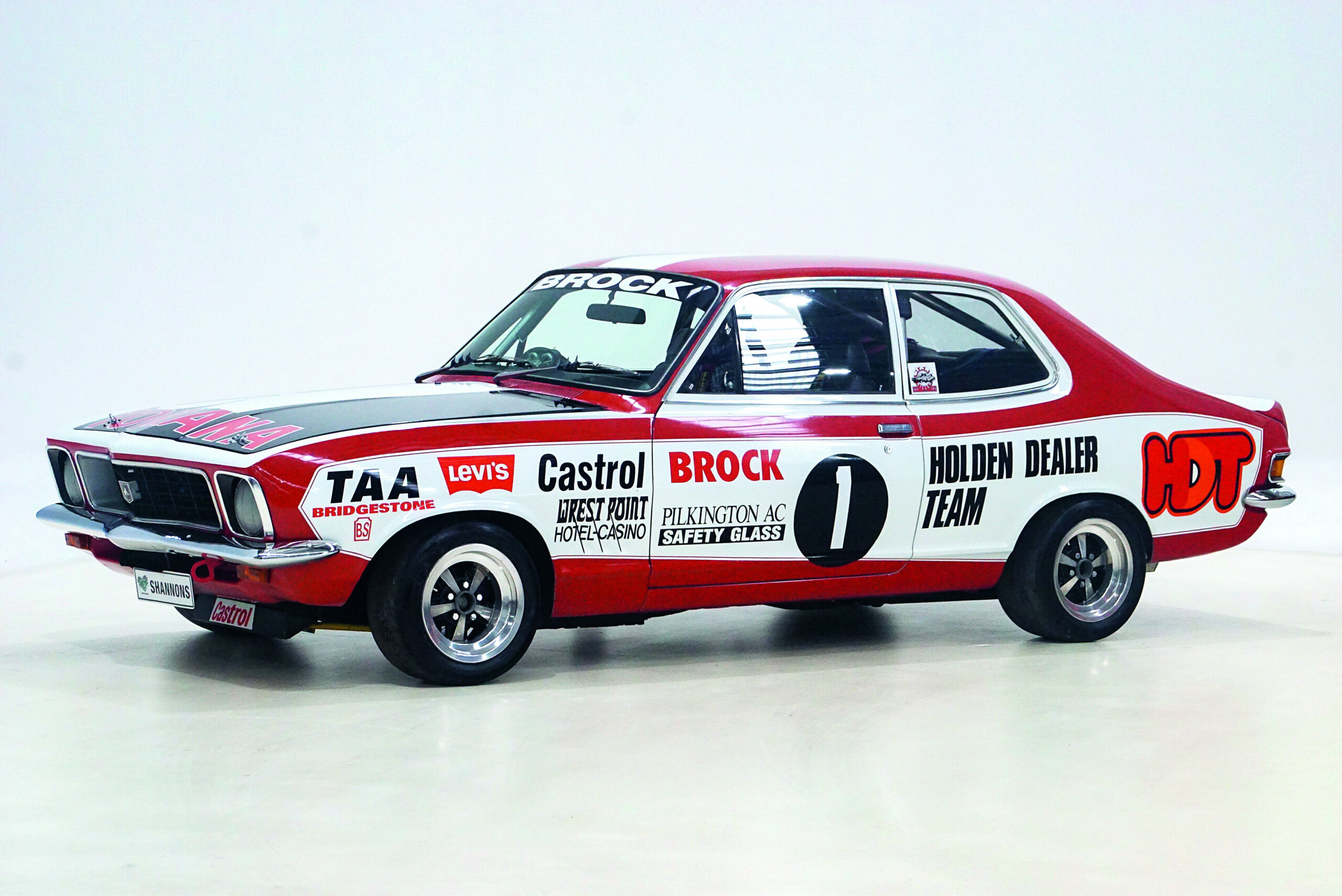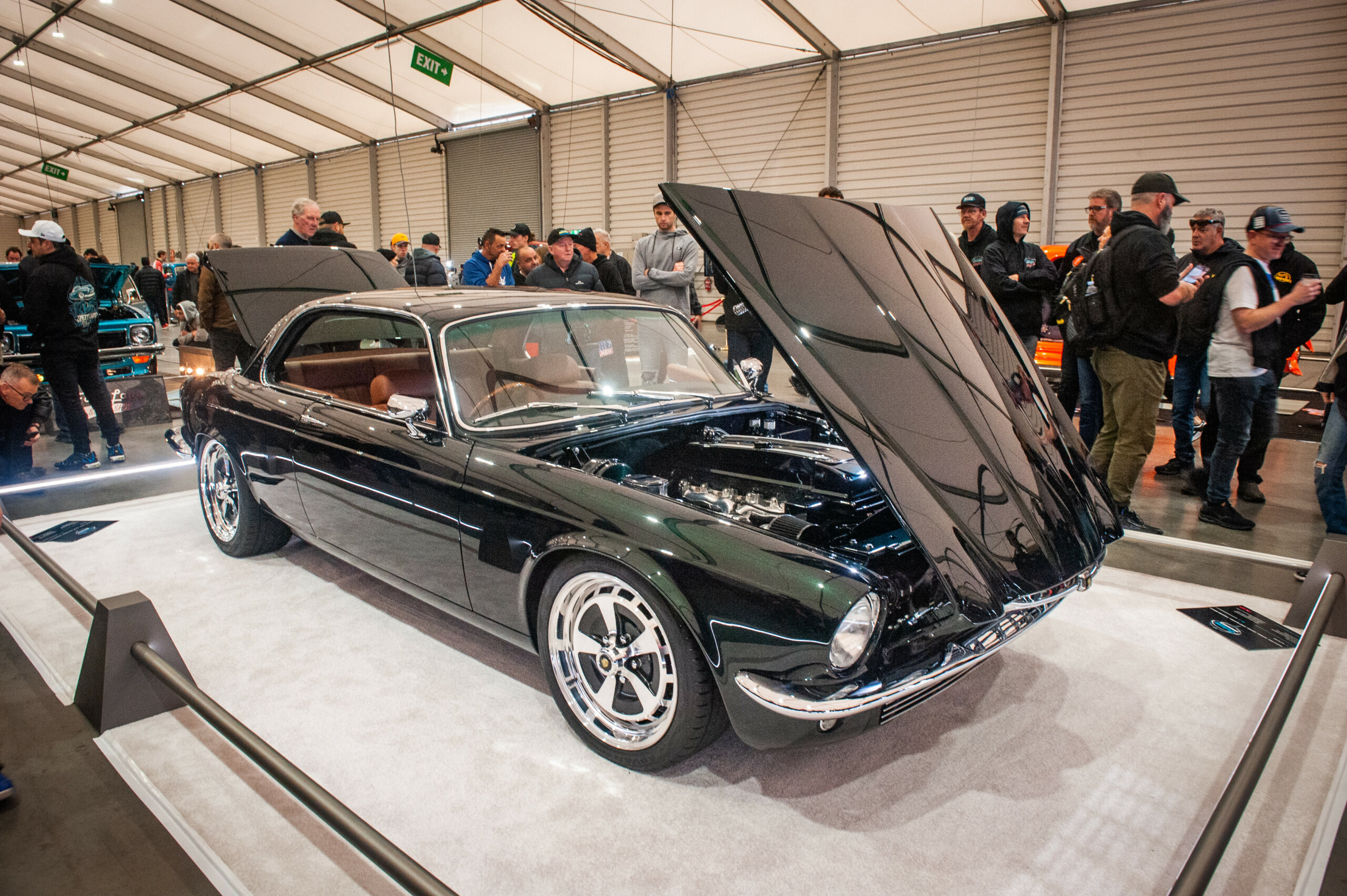Snapshot
- Wild Jag originally built for Kerry Packer by Kevin Bartlett
- Rebuilt by Gary Walker and touted as Australia’s quickest road car
- Street Machine hosted an event at Oran Park for all comers to take on the Jag
UPDATE: The ex-Kerry Packer and Gary Walker twin-turbo XJ-S Jaguar sold yesterday for $217,000 plus buyers’ premium at an online auction by Lloyds. The auction had been planned as a live event, but was switched to a marathon, nine-hour online-only deal due to the three-day snap lockdown that was declared yesterday in South East Queensland.
Other notable results included a VL Group A SS Walkinshaw that went for over $250,000. The ex-Glenn Seton Australian Touring Car Championship-winning Falcon clocked over $520K, didn’t meet reserve and is under negotiation.
For the incredible history of the Jag, read on:
The car best known to Street Machine readers as the car at the centre of the ‘Jag Challenge – Cat Killers Apply Within’ story in our April/May 1986 issue, has been sold at auction by Lloyds.
The twin-turbo ’79 XJ-S Jag first appeared in SM, Oct-Nov ’85, dubbed the Big Block Beater. The owner was Gary Walker of Roley Walker Jaguar fame and a bloke who was clearly not short of ego – or inflammatory chat. Amongst his claims was that the car made 740hp in regular trim and somewhere around 1000hp with the boost wound up and a dose of nitrous sprayed on top.
Those were some serious numbers back then, and Gary didn’t stop there, touting that his car was the fastest road car in Oz. “Mate, if there is any car out there capable of pushing the Jaguar, then it’ll be another European machine; probably a Porsche,” he told SM.
Unsubstantiated claims of high 10-second quarter-mile times were thrown about as well. Along with all that was the assertion that the horsepower had little effect on the car’s driveability. “It’s smooth and quiet, until I get into it,” Roley spouted. “I can take it to town for dinner and it behaves like a gentleman’s carriage.”
The mechanicals at the time included ‘big’ IHI turbos that required the big cat’s shock towers to be moved to fit. There was an intercooler, uprated fuel system, and ex-Ferrari F1 Lucas mechanical injection replacing the factory EFI.
The 5.3-litre V12 was taken out to seven litres, with compression reduced to 7.8:1. Innards included Cosworth pistons, steel crank, fettled heads and high-lift cams. A massive radiator, three thermo fans, bonnet louvers and a big oil cooler helped the cat keep its cool.
The car had reportedly destroyed a Doug Nash five-speed, with the owner considering a Group-A spec Getrag ’box replacement. The rest of the driveline consisted of a monster four-plate Girlock clutch and 2.78:1 final drive. With 15-inch wide Simmons wrapped in Pirelli rubber, the Jag’s guards had to be pumped out. Massive Girlock racing brakes, overhauled suspension and stacks of Connolley leather inside rounded out the package. The cost? Between $150,000 to $200,000 was the guesstimate.
Now, Street Machine editor Phil Scott was only four issues into his tenure at that stage, but he knew a good thing when he saw it, and stirred up the readership thusly: “Put bluntly, the reputation of the V8 is on the line. Anyone out there with a V8 road runner that’ll better 10 for the quarter and run to 300-plus? We’re waiting to hear from you.”
The readers responded with outrage (in fact, it prompted your then-13-year-old author to pen his first letter to the mag), so Phil kept stirring the pot, with the infamous coverline on the April-May ’86 issue reading ‘Jag Challenge – Cat Killers Apply Within.’
Inside the mag was a shot of a smiling Walker with his new twin-turbo XJS – a silver one this time – parked beside a Learjet on his front lawn. The story set out the terms of the challenge – a pink slip test, peak-hour traffic run, a best-of-three drag strip duel and five laps around Oran Park.
Walker kept the aggro coming: “From what I’ve seen of many of these American and Aussie things, they’ll expire in the early morning traffic. And they’ve got Buckely’s of getting a pink slip.” To which he added: “By the way, ask your readers what happened to the V8s at Bathurst?”, a cheeky reference to John Goss’s victory in a Jag on the Mountain in 1985.
The showdown never happened. Phil Scott reported in the Oct/Nov ’86 mag that Walker had sold his Jag and was working on version three. So the challenge went ahead anyway, which was reported on in the December ’86 issue. The event was squeezed into a regular street meet and reduced to a drag-only deal.
“Mate, if there is any car out there capable of pushing the Jaguar, then it’ll be another European machine; probably a Porsche,” he told SM.
Barry Birt of Hume Performance fame built a blown, 427-cube big-block HQ Monaro especially to take on the Jag, but it rocked up on the trailer and with a set of slicks on. This was outside the rules set, but nevertheless, Barry set the quickest time of the day, running 8.77 seconds over Oran Park’s sub 1000-foot strip. The other two challengers were both Ford Cortinas, fitted with 351 Clevos by legendary conversion guru Bob Pinnell. Both Corties fit the criteria, with Bob’s car running a wheel-spinning 10-second pass. Bob’s customer, Michael Fritsch, had wider rubber on his car and managed a 9.98.
And while SM was ready to run the challenge again anytime Walker was ready, that was the last we heard of the car, until Craig Parker uncovered both of Walker’s twin-turbo Jags for his epic ‘Where Are They Now?’ article in the July 2002 issue, when both cars were owned by an unnamed Queensland couple.
And now, the original black GW400 has been sold at auction via Lloyds. The listing discussed something the mag didn’t mention back in the day – that the Jag had originally been owned by Kerry Packer, the bloke who owned Street Machine for many years, along with a fair slice of the rest of the media in Oz. The Packer connection to the Jag was left unsaid out of the kind of discretion billionaires of the day tended to want and get.
As Michael Stahl related in the March 2015 issue of Wheels, Packer’s Jag was converted to twin-turbo spec and developed under the watchful eye of race ace Kevin Bartlett.
Stahl wrote: The two met in about 1979, when Bartlett was asked to provide some driving lessons at Sydney’s Oran Park in Packer’s bog-stock XJ-S.
“He was quite a good steerer, once you got into his head that you had to get the car slowed for the corner, before you could use the power,” KB told me. “But that’s a mistake that virtually everybody does when they first get onto a racetrack.”
“KP had said, ‘Righto, how do we make this thing quicker?’ I said we’ll put a couple of turbochargers on it…It was a complete and utter disaster.”
According to Stahl, the turbos were derived from Indy racing Offenhausers. Rymec Turbocharging (conveniently located in Paddington, just up the road from Packer’s Sydney HQ) replaced the factory EFI with SU carbies. Bartlett reckoned the car made 900kW at its peak. It broke gearboxes, diffs and rear axles, as well as self-immolating. “Never with him in it, but with me a couple of times,” Bartlett was reported to have said.
There is also the legendary story that on one occasion Packer broke down in the car on the way to Canberra. He brought in Bartlett on a chopper to fix the problem. The chopper landed on Lake George, Packer got in and left KB to it!
Incidentally, the initial Oran Park driving lesson would have occurred around the same time that Packer bestowed Channel Nine sponsorship upon Bartlett’s fearsome Group C Camaro – and a few years before KB became Street Machine’s in-house tech guru.
It is also worth mentioning that part of what motivated Packer to go nuts on the Jag was his rivalry with Sydney broadcaster John Laws in his turbo Porsche.
Whether or not Packer and Laws ever had their showdown is unknown, but at some stage the Jag was badly burned in a fire at Rymec and purchased from the insurance company by Walker, who was already familiar with it as Roley Walker Jaguar had supplied many of the parts for the initial build. He and the team then rebuilt the car from ground up, replaced the SUs with mechanical injection, and the rest is (somewhat mythological) history.
Our sister mag, Motor, also reviewed the car in 1985 and revealed that Walker’s XJ-S was used as a test bed for Gary Wilmington’s Group A XJ-S. Jeff Brown, who tested the car, was impressed by its speed and tractability, though the clutch pedal was so heavy he initially thought it was the brake.
Today, the car looks remarkably similar to how it appeared in that 1985 issue of SM, though the mechanical injection has mercifully been replaced by an EFI set-up.
Walker did indeed build a third-twin turbo XJ-S, which became a race car and bobbed up for sale in 2012. Phew!





Comments